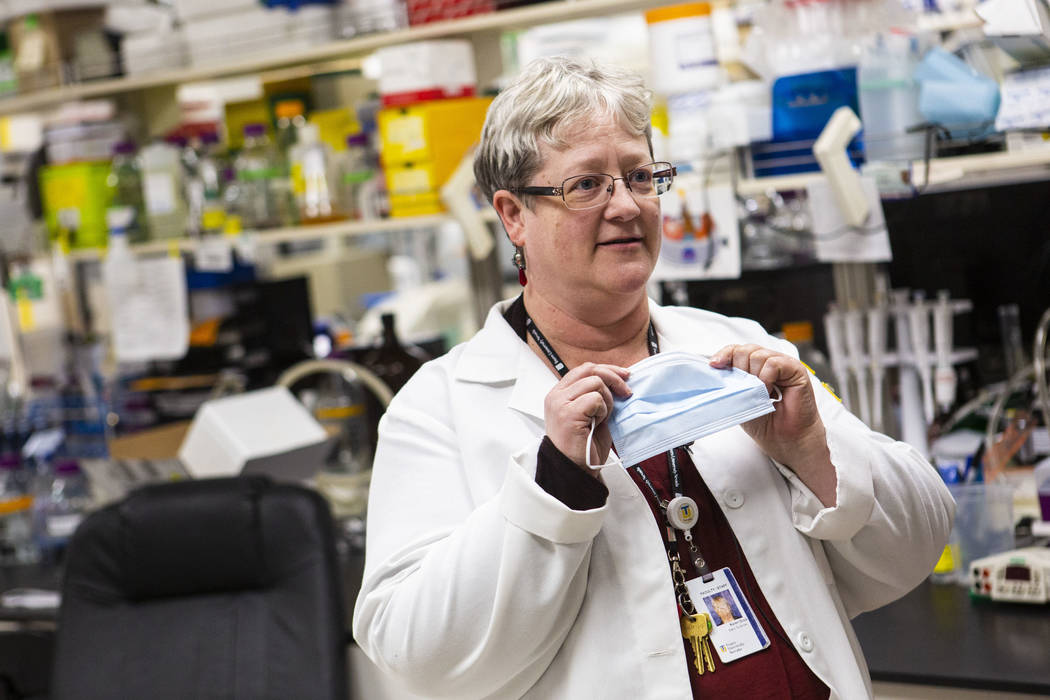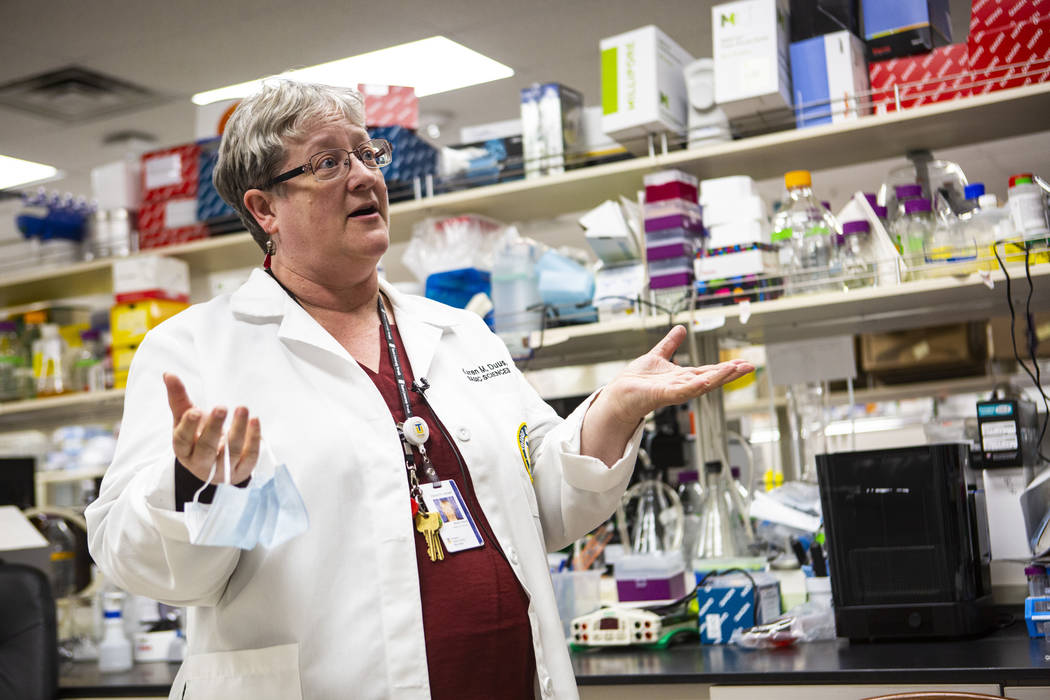Deadly virus spreads, but experts say risk in Las Vegas is low
A new respiratory virus has killed more than 40 people and sickened 1,000 in China, prompting authorities there to lock down Wuhan, the disease’s epicenter, and nearby cities.
The outbreak has spread to neighboring countries and now has a foothold in Europe, with three cases confirmed in France on Friday.
In the U.S., two cases have been confirmed, one in Chicago on Friday and another near Seattle earlier this week. Both those cases involved people who had recently traveled to Wuhan, a major transportation hub with a population of 11 million.
Federal health authorities have directed five of the country’s largest airports to screen arriving passengers for infection in an effort to stop the outbreak’s spread.
No such screening is taking place in Las Vegas, where thousands of tourists are arriving from China and elsewhere in Asia for Lunar New Year celebrations this weekend. But local experts and public health authorities say residents should not be too concerned about contracting the virus in the valley — at least not yet.
The Centers for Disease Control and Prevention “considers this is a very serious public health threat,” the federal agency says on its website. However, “based on current information, the immediate health risk from 2019-nCoV (the name given the new virus) to the general American public is considered low at this time.”
Dr. David Weissmiller, a professor in the UNLV School of Medicine’s Department of Family and Community Medicine, researched coronaviruses early in his career. He noted that the situation remains fluid as new details about the outbreak emerge.
“In 48 hours, 72 hours, that could change,” he said. “It’s really hour by hour right now.”
Jumping species
The new coronavirus, part of a large family of viruses, affects the respiratory system and in the most severe cases can result in pneumonia, which can be fatal.
More than half a dozen coronaviruses have been identified that afflict people, including common cold viruses and the more dangerous SARS and MERS viruses.
“About 30 percent of the common colds that adults experience are actually coronaviruses,” said Karen Duus, an associate professor in microbiology and immunology at Touro University Nevada in Henderson.
“Just like the flu, there are human coronaviruses and different coronaviruses associated with animals,” said Duus, whose research has focused on viruses. “That’s where the problem comes in. Every now and again, they’ll jump species.”
That’s what public health authorities say happened with the new virus, as well as with the SARS and MERS viruses.
The SARS virus — which emerged in 2002 in China, killing 800 people globally and infecting 8,000 — originated in bats. It jumped to civet cats — which look like a cross between a cat and a skunk — and then to humans. The MERS virus, first identified in 2012, also originated in bats and then jumped to camels before jumping to humans, according to public health authorities.
Scientists don’t know yet which animal species passed the new virus to humans. However, they are pegging the source of the infection on a market in Wuhan where animals, including wildlife, were sold for consumption.
“In some places in the world, humans and animals interact much, much more actively than they do in this country,” Duus said she tells her medical students. “When we go to the grocery store, our meat is nicely packaged, right?” But in other countries, where they may not have refrigeration, people “buy meat fresh, really fresh, like it’s killed right in front of you.”
This closer contact provides greater opportunity for viruses, especially rapidly mutating coronaviruses, to infect people.
In the past week, public health authorities have determined that the new coronavirus is not only spread from animal to human but also from human to human. Early indications are that it is not highly contagious like measles, but health authorities say further study is needed.
“SARS and MERS didn’t spread that easily from person to person,” said Brian Labus, assistant professor of epidemiology and biostatistics at UNLV. “That’s one of those things that works in our favor.”
With the new virus, “It’s a little too soon to say anything with certainty, but it doesn’t seem to be spreading like wildfire,” Labus said. “We would expect it to behave similarly to other coronaviruses,” which spread through close contact with an infected person.
Slowing spread
To stop the spread of the disease, Chinese authorities have taken a number of measures, including shutting down transportation in Wuhan and nearby cities.
“I feel really bad for those people, but it’s the right thing to do from a public health standpoint,” said Dr. Judith Ford, medical director of clinical quality for HealthCare Partners Nevada.
Ford and others interviewed for this story noted the public health authorities have learned many lessons since the SARS outbreak, which, according to the CDC, resulted in only eight U.S. cases.
With the current outbreak, “the public health initiatives have been much more coordinated and much more transparent,” Ford said. China has been more forthcoming with information and quicker to “squash” the outbreak with quarantines.
The Southern Nevada Health District has provided updates from the CDC to area medical providers to foster awareness.
“We have our resources in place, and we have our community partners also aware and willing to collaborate if a larger response is needed,” said Dr. Fermin Leguen, acting chief health officer for the district.
“Right now the disease is mostly contained in China,” he said. “I think that limiting international travel (from affected areas) is positive for us in terms of helping contain that disease.
“International travel is our biggest concern,” Leguen said.
Lunar New Year
The outbreak comes at a time of the year when people in China and elsewhere typically travel, including internationally, for Lunar New Year.
“The timing of it (the outbreak) I don’t think could be worse,” Labus said. “People all across China are going to take their big winter holiday.”
Some will travel to the U.S. and to Las Vegas, where the gaming resorts cater to well-heeled Asian customers known for lavish spending and longer stays.
“We’re a plane ride away from any outbreak, anywhere in the world,” said Labus, a former epidemiologist with the Southern Nevada Health District.
However, “we’re not constantly overrun by disease outbreaks here,” he noted. Disease incubation periods of days or weeks, coupled with the short stays of most tourists, make for less opportunity for the spread of disease in Las Vegas.
The CDC notes that MERS and SARS generally spread between “close contacts” through respiratory droplets produced when an infected person coughs or sneezes.
Early indications are that the new virus operates the same way, meaning that hospital workers and household members of infected people are most at risk, Ford said.
While emphasizing that she sees little risk in Southern Nevada, Ford added, “If you’re a pai gow dealer (on the Strip), I think there is some risk to you.”
“I don’t think that risk is super high, but it’s a risk.”
Ford advises the public to take certain general precautions. Avoid touching your face and mouth. Wash your hands before eating. Stay away from work and school if you’re sick.
To keep the risk in perspective, Ford noted that 11 people in Clark County have died from the flu this season, and nearly 800 have been hospitalized.
“That’s real, and that’s here,” she said.
Contact Mary Hynes at mhynes@reviewjournal.com or 702-383-0336. Follow @MaryHynes1 on Twitter.
What is a coronavirus?
Coronaviruses are a large family of viruses, some of which cause illness in people and others that circulate among animals, including camels, civet cats and bats. In rare instances, animal coronaviruses can evolve and infect people and then spread between people, as has been the case with SARS, MERS and now, the new coronavirus.
Source: Centers for Disease Control and Prevention





















